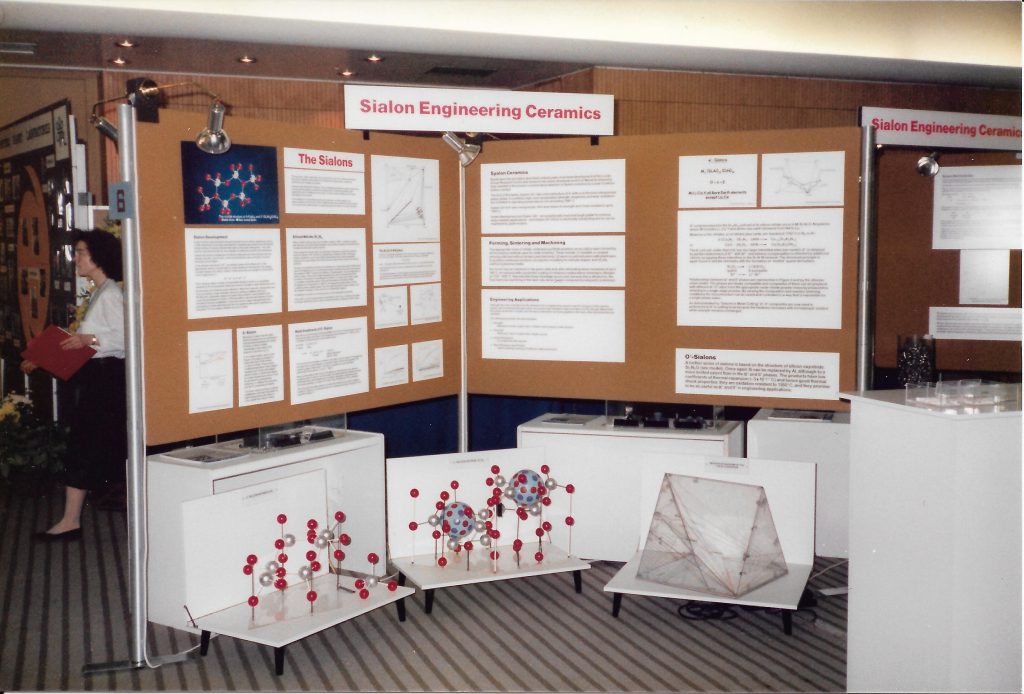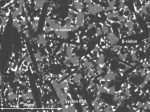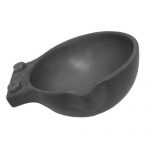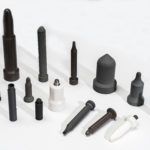Silicon nitride (Si3N4) is a high-performance refractory ceramic that can exist in three different crystallographic phases (α, β and γ), each displaying distinct thermodynamic properties. Each of these material phases is suitable for severe working conditions, and silicon nitride been used to manufacture high-temperature components in some of the most demanding industrial sectors worldwide. However, conventional sintering methods struggle to produce fully dense and complex silicon nitride components, and alternative techniques represent significant additional costs. SiAlON ceramics were engineered as a direct solution to these issues.
The Discovery of SiAlON Ceramics
In the 1970s, independent studies in Japan and at Newcastle University in the UK yielded positive results with the formulation of new arrangements of silicon (Si), aluminium (Al), oxygen (O), and nitrogen (N). The resultant SiAlON formula led to a ceramic alloy sharing many similarities with silicon nitride, including isostructural arrangements with the three phases of silicon nitride.

The first commercially viable SiAlON was isostructural with β-silicon nitride. Silicon atoms were mutually substituted for aluminium and nitrogen atoms were replaced with oxygen, resulting in very little change to the fundamental structural integrity of silicon-nitride bonds arranged in high-strength tetrahedra. Shortly after this discovery, the β-SiAlON grade Syalon 101 was released for commercial and industrial application, providing a functional and cost-effective alternative to established silicon nitride.
α- and α:β-SiAlON ceramics were discovered later, the former being isostructural with α-silicon nitride and displaying a physiochemical stacking structure that was dissimilar to established SiAlONs. Altering the tetrahedral structure of silicon in the α-phase material caused a significant decrease in ductility but resulted in a SiAlON grade with improved hardness over β-SiAlONs. Mixed α:β-SiAlON grades such as Syalon 050 were developed to provide an ideal intersection of strength, toughness, and hardness for enhanced wear capabilities.
Innovations in SiAlON Ceramics
Since their inception over 40 years ago, SiAlON ceramics have become one of the leading engineered materials for application in severe working conditions. Thermocouple protection sheaths, molten metal heater and riser tubes, and extrusion dies are routinely fabricated using β- and α:β-SiAlON ceramics. Ongoing innovations continue to further improve the capacities of these materials for commercial and industrial use.
The β-phase composite Syalon 501 was developed with titanium nitride to alter the conventionally insulating properties of SiAlONs and enable electro-discharge machining of the material. This results in a slight drop in physio-mechanical properties while enabling profiling capabilities that are impossible with the conventional material, supporting the fabrication of more complex ceramic shapes than ever before.
This advancement is gradually being overtaken by the onset of additive manufacturing, which represents significant promise for 3D-printing ceramic materials with near-identical physical properties to the same materials produced through iso-static processing. Syalon 101 can now be printed into unique shapes of increasingly small dimensions to support conventional manufacturing processes with new material arrangements.
SiAlON Ceramics from International Syalons
International Syalons has been intrinsically involved in the history of SiAlON ceramics since they were first discovered in the 1970s. We have committed ourselves to continuing material innovations to provide a comprehensive alternative to expensive material issues.
Read our introduction to SiAlON ceramics for more insights, or contact a member of the team today with any queries.



